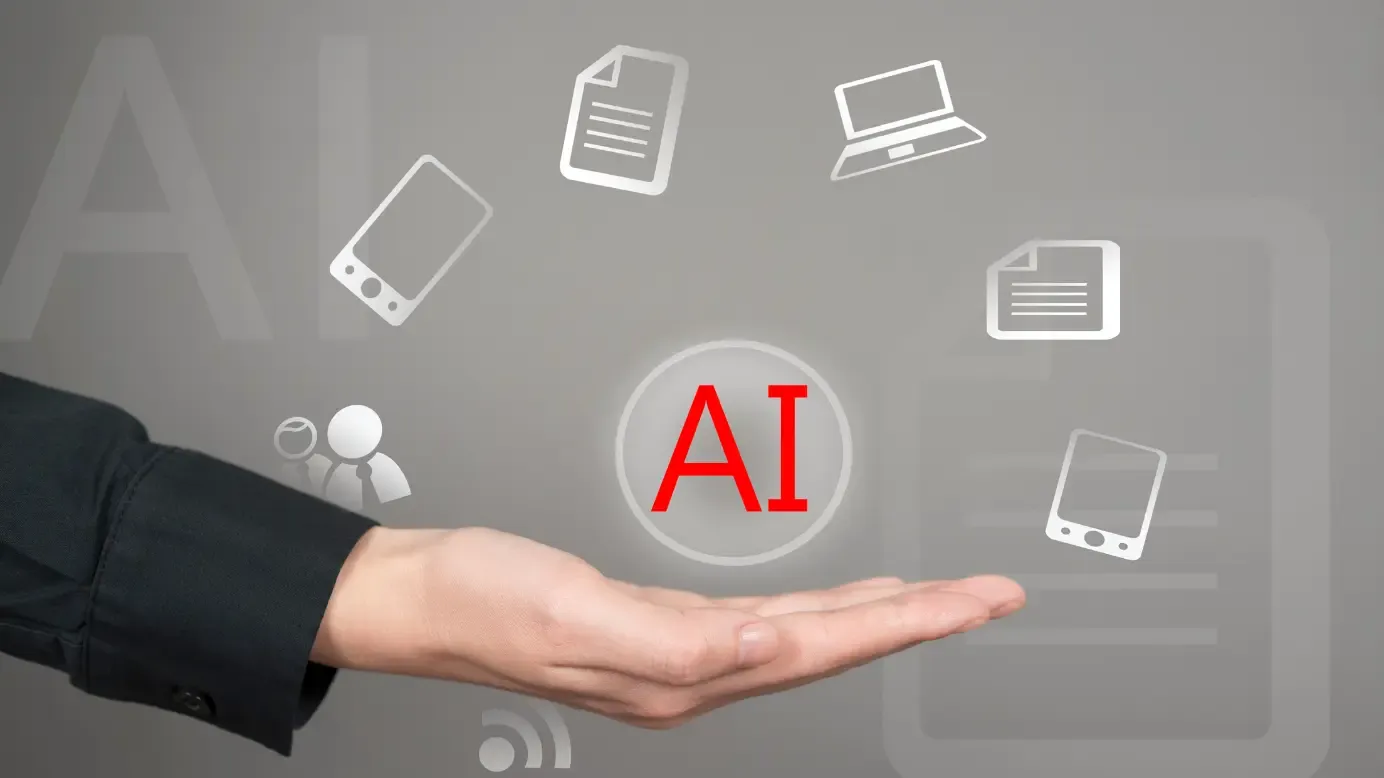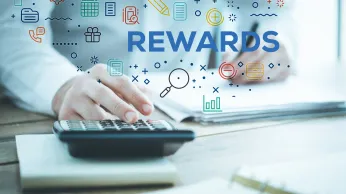AI in HR: Benefits, Tools & Future Trends for HR Professionals To Look For
Artificial intelligence in human resources (HR) is transforming the way companies manage recruitment, engagement, and performance. With AI tools for HR becoming more advanced, businesses are streamlining processes and boosting employee satisfaction.
In questa pagina
- What is Artificial Intelligence in HR?
- Vantaggi dell'IA nel migliorare l'esperienza dei dipendenti
- How is AI used in human resources?
- Top AI Tools for Human Resources in 2025
- Casi di studio ed esempi reali di IA nelle risorse umane
- Challenges and ethical considerations when leveraging artificial intelligence in HR
- How Empuls supports AI-powered employee management (EM)
- Future of AI in HR: Trends and predictions
- Conclusione
- Domande frequenti
Si prevede che l'IA (Intelligenza Artificiale) trasformerà quasi tutti i settori, compreso quello delle risorse umane. Alcune grandi aziende, come i team HR e di acquisizione dei talenti di Google e IBM, hanno iniziato a utilizzare l'AI nei loro flussi di lavoro quotidiani per migliorare l'efficienza e la produttività e rimanere al passo con il panorama digitale in costante evoluzione.
It has been reported that 76% of HR leaders believe that if they don't adopt HR practices in the next 1-2 years, they will not be as successful as the companies that have already incorporated AI technology.
Employees are the backbone of every company, and AI plays a huge role in enhancing the employee experience. AI has already been used in various aspects of employee management by supporting employees in learning and development and creating personalized upskilling programs based on their unique needs and preferences.
Gli strumenti di intelligenza artificiale possono anche contribuire al benessere dei dipendenti: diversi strumenti offrono informazioni preziose sul carico di lavoro e sul benessere generale dei dipendenti.
L'IA ha un impatto significativo sulle risorse umane e può contribuire a rimodellare molti aspetti del settore. L'integrazione dell'IA nelle pratiche HR comporta diversi vantaggi sia per le aziende che per i dipendenti.
Con l'integrazione dell'intelligenza artificiale nelle risorse umane, gli stakeholder si aspettano che venga utilizzata in modo efficiente. Con molti settori che abbracciano l'intelligenza artificiale per un lavoro più rapido ed efficiente, le aziende devono adattarsi e rimanere al passo con la concorrenza.
What is Artificial Intelligence in HR?
AI in HR refers to implementing Machine Learning (ML), Natural Language Processing (NLP), and other AI technologies to automate human resources tasks and aid decision-making.
It allows for a data-based approach to talent acquisition, employee advancement, and retention that aims to reduce biases and enhance job seekers' and employees' experiences.
AI tools can assist HR teams in diverse areas, including employee records management, payroll processing, recruitment, onboarding, and performance management.
Until recently, human resources was viewed as a purely administrative department. HR analytics (which sprung up ever since the rise of the digital era) introduced a more evidence-based approach to managing people, including a data-driven model instead of intuition-based decision-making.
Il modello data-driven prevedeva la raccolta e l'analisi dei dati sulle risorse umane, come i tassi di turnover dei dipendenti, l'assenteismo e i dati demografici del personale, per comprendere i modelli e aiutare il processo decisionale essenziale nelle risorse umane.
However, with the gradual passing of time and the introduction of advanced data analytics and AI tools, the role of HR has evolved. HR departments today use data more strategically to make better decisions, predict future trends, and contribute to organizational performance and growth.
Because of this, organizations now acknowledge HR as an effective strategic partner that can help shape business strategy and gain a competitive edge.
Interestingly, 81% of HR leaders are exploring AI to improve organizational efficiency, and 93% use AI tools to reduce organizational costs. One of the top barriers for 37% of HR Managers implementing AI is the lack of integration into the existing systems.
While traditional AI applications have streamlined HR tasks, generative AI is revolutionizing the field by enabling the creation of new content and insights. According to McKinsey, generative AI offers significant value in HR through:
- Content creation: Automating the development of job postings and personalized candidate communications.
- Data summarization: Extracting insights from unstructured data to enhance performance management.
- Employee engagement: Utilizing AI-driven chatbots to provide personalized learning recommendations.
- People analytics: Analyzing large datasets to predict attrition and inform workforce planning.
These are only few applications of AI that can lead to the substantial efficiency gains and more informed decision-making in HR functions.
Vantaggi dell'IA nel migliorare l'esperienza dei dipendenti
L'utilizzo dell'intelligenza artificiale per migliorare l'esperienza dei dipendenti offre diversi vantaggi ai team delle risorse umane. Alcuni dei vantaggi significativi includono:
1. Razionalizzazione dei processi di reclutamento
AI algorithms can effectively analyze vast candidate data, enhancing the recruitment process's speed and accuracy. AI can also provide more objective candidate evaluation, which can help reduce unconscious biases and ensure a fair selection process. It removes human error and subjective decision-making, which fosters fairer hiring practices.
L'IA ha anche il potenziale per valutare i comportamenti sul posto di lavoro dei candidati attraverso tecniche di analisi avanzate, che possono aiutare a identificare il miglior adattamento per l'organizzazione. L'IA può anche aiutare a prevedere le esigenze future della forza lavoro analizzando la strategia organizzativa, le tendenze del mercato e i dati sulle prestazioni.
2. Migliorare l'onboarding
AI can help automate the daily onboarding tasks and allows HR teams to focus on the strategic side of things. AI can also help create a personalized onboarding experience, as it will be tailored to each employee's individual needs, enhancing their initial engagement and allowing them to integrate seamlessly into the company's culture. By quickly setting up your accounts and offering personalized training programs, AI-driven systems help speed up the recruitment and onboarding process.
3. Migliorare il coinvolgimento dei dipendenti
Gli strumenti di IA possono monitorare costantemente gli obiettivi e le prestazioni dei dipendenti e fornire un feedback immediato. Stabilendo obiettivi chiari e misurabili, l'IA promuove anche valutazioni imparziali delle prestazioni.
AI can also analyze performance data to help predict future performance trends, which supports successful planning and talent management. AI-automated performance management can also lead to enhanced productivity and better results.
4. Strategic workforce planning enhanced by AI
AI facilitates strategic workforce planning by analyzing current workforce capabilities and predicting future talent needs. Through data-driven insights, HR can identify skill gaps, forecast turnover rates, and develop targeted recruitment strategies.
For instance, AI can assess the impact of emerging technologies on job roles, enabling proactive reskilling programs. This strategic approach ensures that organizations remain agile and prepared for future workforce challenges.
How is AI used in human resources?
Artificial Intelligence (AI) is transforming human resources by automating repetitive tasks, improving decision-making, and enhancing employee experiences. HR departments are leveraging AI to streamline their operations and create more personalized, efficient, and data-driven processes.
From recruitment to employee retention, AI is helping HR professionals focus on strategic initiatives that drive business growth. Here are some common applications of AI in human resources:
- Recruitment and talent acquisition: AI automates resume screening, candidate ranking, and job matching using algorithms and predictive analytics.
- Employee engagement and support: Chatbots and virtual assistants provide real-time assistance and support, improving employee satisfaction and productivity.
- Onboarding and training: AI tools generate personalized onboarding experiences and recommend learning paths tailored to individual roles and goals.
- Performance management: AI analyzes performance data to offer objective feedback and identify high-potential employees for succession planning.
- Workforce planning: Predictive analytics help HR teams forecast hiring needs, detect flight risks, and optimize workforce strategies.
- Diversity and inclusion: Natural language processing (NLP) detects biases in job descriptions and promotes inclusive language to attract diverse candidates.
- Policy and content creation: Generative AI tools help create consistent, data-backed HR documents, such as job descriptions, training manuals, and performance summaries.
With these applications, AI is reshaping the future of work by empowering HR teams to be more agile, proactive, and employee-centric.
Top AI Tools for Human Resources in 2025
Gli strumenti e le tecnologie di intelligenza artificiale sono ora incorporati nelle pratiche HR per migliorare l'efficienza, il coinvolgimento dei dipendenti e i risultati aziendali desiderabili. Alcuni strumenti e tecnologie di IA essenziali inclusi nelle risorse umane sono:
1. Chatbot e assistenti virtuali
AI chatbots are virtual assistants that use artificial intelligence to support and assist employees. These chatbots can answer frequently asked questions, provide insights about the company's policies, and assist with basic HR tasks and inquiries. AI chatbots can help streamline employee support processes, lessen response times, and enhance employee satisfaction.
Gli assistenti virtuali basati sull'intelligenza artificiale possono aiutare i dipartimenti delle risorse umane a svolgere diversi compiti, come rendere il loro lavoro più efficiente ed efficace. Possono anche aiutare ad automatizzare le attività HR ripetitive come l'onboarding, i congedi e l'amministrazione dei benefit.
They can also offer personalized recommendations to employees regarding career development, performance management, and other training opportunities. Virtual assistants can also allow HR specialists to focus on more strategic tasks and enhance employee engagement.
2. Predictive analytics
Le soluzioni di analisi predittiva utilizzano algoritmi di intelligenza artificiale per esaminare i dati dei dipendenti e osservare le persone con un maggiore potenziale di successo nei loro ruoli. Questi metodi possono anche prevedere il successo futuro considerando le performance precedenti e le variabili della traiettoria di carriera.
By identifying high-potential candidates, companies can focus their development efforts and offer progress in the company. Predictive analytics can aid succession planning by identifying prospective talent within the organization.
L'utilizzo dell'analisi predittiva può portare a una migliore pianificazione della forza lavoro. L'intelligenza artificiale è in grado di identificare schemi e tendenze analizzando una vasta quantità di dati, consentendo alle aziende di prendere decisioni più intelligenti in materia di assunzioni e pianificazione delle successioni. L'analisi predittiva può anche identificare i potenziali rischi di fuga, consentendo ai dipartimenti delle risorse umane di sviluppare strategie per trattenere efficacemente i migliori talenti.
3. Elaborazione del linguaggio naturale (NLP)
HR professionals use NLP techniques to analyze employee and candidate data, emails, resumes, and feedback. NLP algorithms analyze unstructured text data to utilize valuable information, including sentiment analysis, personality traits, and competency.
Questo può aiutare i team delle risorse umane a prendere decisioni sull'assunzione e sulla conservazione dei talenti e a migliorare la motivazione dei dipendenti. La PNL può anche automatizzare processi HR come lo screening dei curriculum, l'analisi dei feedback dei dipendenti e la classificazione dei candidati.
I professionisti delle risorse umane possono utilizzare la PNL per analizzare i curriculum e trovare il candidato giusto per il lavoro. Gli algoritmi NLP estraggono parole e frasi chiave, le abbinano alla descrizione del lavoro e classificano i candidati in base alle loro qualifiche.
L'NLP può essere utilizzato anche per l'analisi del sentiment, che può essere utilizzata per identificare il livello di integrazione dei candidati nella cultura aziendale. Gli algoritmi NLP possono anche identificare i pregiudizi negli annunci di lavoro e utilizzare un linguaggio inclusivo per migliorare la diversità nel pool di candidati.
4. AI Centers of Excellence (CoE) in HR
Establishing an AI Center of Excellence (CoE) within HR departments serves as a centralized body to oversee AI initiatives. The CoE is responsible for setting best practices, ensuring compliance with ethical standards, and facilitating knowledge sharing across the organization.
By having a dedicated team focused on AI, HR can more effectively integrate AI tools for human resources, drive innovation, and maintain consistency in AI applications.
5. Generative AI (GenAI) in HR
Generative AI (GenAI) is revolutionizing HR by enabling the creation of content such as job descriptions, training materials, and policy documents. HR departments are leveraging GenAI to automate repetitive tasks, allowing professionals to focus on strategic initiatives.
For instance, GenAI can generate personalized onboarding materials tailored to individual roles, enhancing the new hire experience. Additionally, it aids in drafting performance review summaries by analyzing employee data, ensuring consistency and objectivity.
Casi di studio ed esempi reali di IA nelle risorse umane
Passiamo in rassegna alcuni esempi reali di come alcune delle aziende più importanti del mondo hanno incorporato l'IA nelle loro pratiche HR e di come questa strategia le abbia portate al successo.
1. Unilever's AI-powered recruitment
Unilever's HR department has replaced conventional hiring with digital interviews and AI-powered online assessments. This unique approach also expands the talent pool by enhancing diversity and inclusivity.
It also reduces unconscious biases, which ensures a fair and objective selection process. This has resulted in a more efficient hiring process that aligns with the demands and expectations of the modern talent pool.
2. Il coinvolgimento dei dipendenti guidato dall'intelligenza artificiale di Hilton
Hilton has implemented AI-driven strategies to enhance employee engagement. These strategies aim to improve the employee experience, increase productivity, and reduce turnover rates. By implementing AI, Hilton saw an opportunity to enhance human connection and responsiveness in the application and interview process.
I responsabili delle risorse umane si sono resi conto del potere dell'intelligenza artificiale di ridurre i tempi di copertura delle offerte di lavoro, di migliorare l'esperienza dei candidati e di ridurre il carico di lavoro amministrativo dei reclutatori. Questo ha portato alla creazione di Ally, un chatbot per i candidati in entrata, che è stato trovato sul sito delle carriere di Hilton.
Hilton ha utilizzato l'intelligenza artificiale anche per i video colloqui e le valutazioni, ottenendo un Net Promoter Score di 85 e migliorando i tassi di assunzione ai colloqui. Utilizzando Ally, il lavoro per cui ci si candida viene inviato al telefono con un link per completare la domanda di lavoro Hilton in meno di un minuto, il che è davvero impressionante.
3. L'analisi Watson di IBM nelle risorse umane
IBM Watson Orchestrate is an AI-powered tool that allows HR professionals to automate routine HR tasks, analyze data, and make better business decisions. It uses Natural Language Processing (NLP) to draw from prebuilt and custom skills to implement functions specific to human resources processes by integrating with applications that your HR department already relies on.
I professionisti delle risorse umane possono utilizzare Orchestrate per automatizzare le attività che richiedono molto tempo, come il sourcing e il reclutamento dei candidati, consentendo loro di concentrare tempo ed energie sugli aspetti più strategici del reclutamento. Questo ha migliorato la produttività dei professionisti delle risorse umane, portando a migliori assunzioni di candidati eccezionali.
Orchestrate aiuta anche ad automatizzare le attività manuali di approvvigionamento, facendo risparmiare al team di IBM tempo prezioso per pianificare iniziative strategiche e soddisfare le esigenze e i requisiti del cliente. L'onboarding richiede l'attenzione umana e un sacco di scartoffie. Watson di IBM automatizza questo processo che richiede molto tempo e introduce senza problemi i nuovi candidati nell'azienda.
Scaricando queste attività su Orchestrate, i team HR possono concentrarsi su un approccio umano-centrico di maggiore impatto per l'azienda e i dipendenti.
Challenges and ethical considerations when leveraging artificial intelligence in HR
Although there are many benefits that artificial intelligence offers to HR teams, there are still some challenges and ethical considerations that you need to be aware of when incorporating AI in HR practices. Some critical factors to consider include:
1. Privacy e sicurezza dei dati
Con l'aumento della necessità e dell'uso dell'IA nelle pratiche HR, soprattutto per quanto riguarda la gestione dei dati sensibili dei dipendenti e dei candidati, sono aumentate le preoccupazioni relative alla privacy dei dati e alla cybersicurezza. Le aziende devono gestire i dati dei propri dipendenti con sensibilità e attenzione e rispettare le normative sulla protezione dei dati come il GDPR e il CCPA.
Sebbene l'uso dell'intelligenza artificiale nelle risorse umane stia prendendo piede, molti responsabili delle risorse umane nutrono preoccupazioni riguardo alla sua accuratezza. Si preoccupano anche di garantire che i dati sensibili offerti da dipendenti e candidati non vengano utilizzati per l'ulteriore formazione del modello di IA, compromettendo in ultima analisi la loro privacy e sicurezza.
HR departments need to implement robust cybersecurity measures, like investing in a Remote access VPN, using reliable antivirus software, and using multi-factor authentication to maintain trust, protect employees' confidential information, and ensure they're protected from potential data breaches.
2. Bias ed equità nell'IA
One of the most significant drawbacks of using AI is the bias during the hiring process. The US Equal Opportunity Employment Commission announced in May last year that employers using AI tools can be liable for discriminatory hiring practices. HR leaders need to ask specific questions during the software purchasing process and ensure they are aware of any potential biases.
Gli algoritmi di intelligenza artificiale possono perpetuare pregiudizi sociali nei dati su cui vengono addestrati. Fate attenzione ai potenziali risultati discriminatori basati su sesso, razza, età e altre caratteristiche sensibili.
Se i dati utilizzati per addestrare i modelli di intelligenza artificiale presentano pregiudizi, questi possono essere perpetuati nel processo decisionale. Questo può portare a pratiche di assunzione discriminatorie e a disuguaglianze di opportunità per i dipendenti provenienti da contesti diversi.
3. Soluzioni uniche per tutti
I sistemi HR basati sull'AI possono offrire soluzioni standard per i problemi più comuni del reparto HR. Se da un lato ciò può contribuire a migliorare l'efficienza, dall'altro comporta la mancanza di un supporto personalizzato per le esigenze e i requisiti personali dei dipendenti.
Ogni dipendente porta sul posto di lavoro i propri punti di forza, le proprie debolezze e le proprie esperienze. Solo affidandosi all'intelligenza artificiale per gestire le prestazioni e lo sviluppo dei dipendenti si può evitare il tocco umano e la connessione necessari per comprendere e coltivare i migliori talenti.
4. Emphasis on human-centered AI approaches
Adopting a human-centered approach to AI in HR ensures that technology serves to augment human decision-making rather than replace it. This involves designing AI systems that are transparent, explainable, and aligned with human values.
For example, AI-driven recruitment tools should provide insights into their decision-making processes, allowing HR professionals to understand and trust the outcomes. By focusing on human-centered AI, organizations can foster greater acceptance and effective utilization of AI tools for human resources.
5. Navigating AI-induced workforce disruptions
The introduction of AI in HR processes may lead to workforce disruptions, including changes in job roles and required skill sets.
Organizations must proactively manage these transitions by communicating changes, providing reskilling opportunities, and involving employees in the transformation process. By addressing potential disruptions head-on, companies can mitigate resistance and foster a culture of adaptability.
How Empuls supports AI-powered employee management (EM)
As HR teams increasingly turn to artificial intelligence for smarter and faster decision-making, Empuls stands out as a powerful platform that bridges AI with employee management (EM) to create more engaged, productive, and satisfied workforces. Empuls doesn’t just streamline processes—it enhances the entire employee lifecycle, making it a valuable addition to any HR tech stack embracing AI.
1. Automating employee engagement with intelligent nudges

Empuls uses AI-powered nudges and personalized notifications to drive participation in engagement programs. Whether it’s pulse surveys, recognition events, or wellness challenges, the platform ensures that employees stay informed and motivated through timely reminders. This automation reduces manual follow-ups and ensures consistent engagement across teams.
2. Using analytics to improve employee experience

Empuls provides real-time dashboards and sentiment analysis based on employee feedback, surveys, and interactions. With built-in analytics, HR leaders can identify patterns in engagement, burnout risk, and recognition trends. These insights empower organizations to make data-driven decisions to retain top talent and elevate morale.
3. Enabling continuous recognition and rewards

Recognition is a key pillar of employee management, and Empuls automates this with AI-driven suggestions and reward triggers. For example, if an employee reaches a milestone or consistently exceeds performance goals, Empuls can automatically prompt managers to recognize and reward them through digital badges, gift cards, or custom awards.
This fosters a culture of continuous appreciation, boosts motivation, and aligns with the broader AI-driven approach to HR.
4. Personalizing employee communication at scale

AI in HR thrives on personalization, and Empuls leverages this by delivering tailored internal communications to employees based on their behavior, location, and preferences. Whether it's onboarding information, learning modules, or wellness updates, the right message is delivered to the right person at the right time—without HR teams needing to micromanage every message.
This enhances the employee communication experience, a critical component of AI-led EM strategies.
5. Supporting strategic HR planning with feedback insights

With Empuls, HR teams can conduct pulse surveys, lifecycle feedback, and eNPS measurements with ease. The platform uses AI to categorize and summarize open-ended responses, helping HR teams quickly interpret employee sentiment and act on it. This feedback loop is essential for shaping talent strategies and planning workforce interventions proactively.
Whether you're aiming to reduce attrition, drive engagement, or improve your employer brand, Empuls offers the AI-enabled infrastructure to support your goals and stay ahead of the competition. Schedule a call now to learn more!
Future of AI in HR: Trends and predictions
Il futuro delle risorse umane e i suoi progressi sono strettamente legati all'intelligenza artificiale. L'intelligenza artificiale contribuirà a trasformare le pratiche HR, consentendo di rendere più efficienti il reclutamento, l'acquisizione dei talenti e la gestione dei dipendenti. I professionisti delle risorse umane possono ora sperimentare processi semplificati e concentrarsi su risultati basati sui dati.
The integration of AI in HR has led to the creation of specialized roles aimed at managing and optimizing AI tools for human resources. Positions such as HR AI Product Managers and AI Ethics Officers are becoming increasingly common.
These roles are responsible for overseeing the deployment of AI solutions, ensuring ethical considerations are addressed, and aligning AI initiatives with organizational goals. By having dedicated professionals in these positions, companies can better navigate the complexities of AI implementation in HR.
Gartner reports that by 2025, "60% of enterprise organizations will adopt a responsible AI framework for their HR technology, and in turn, achieve a greater employee experience and trust in the organization."
Tuttavia, è essenziale notare che l'IA non sostituirà la necessità di professionisti delle risorse umane. La prospettiva e l'esperienza umana svolgono un ruolo cruciale nelle risorse umane, consentendo alle aziende di prosperare e crescere. Per questo le aziende devono trovare il giusto equilibrio tra tecnologia e interazione umana per trarne beneficio.
Conclusione
Gli strumenti e le soluzioni di intelligenza artificiale possono migliorare l'esperienza dei dipendenti e aumentarne la fidelizzazione. I dipendenti possono scaricare le loro attività amministrative ripetitive, ottimizzare i flussi di lavoro e acquisire nuove competenze tecnologiche.
L'utilizzo dell'intelligenza artificiale per migliorare l'esperienza dei dipendenti favorisce il loro benessere e aiuta l'organizzazione a costruirsi una buona reputazione. Gli strumenti di IA possono creare programmi di formazione personalizzati e automatizzare le attività manuali e ripetitive, consentendo un flusso di lavoro continuo, la motivazione dei dipendenti e la produttività.
Domande frequenti
1. What is the role of AI in HR?
AI in HR streamlines and enhances tasks like recruitment, onboarding, performance management, and workforce planning. It helps automate repetitive processes, improve decision-making with data insights, reduce biases, and personalize employee experiences.
2. Can HR be replaced by AI?
No, AI cannot fully replace HR. While it automates tasks and boosts efficiency, the human touch in areas like employee relations, ethical decision-making, and organizational culture is irreplaceable. AI supports HR, but doesn’t eliminate the need for human professionals.
3. What companies use AI in HR?
Top companies using AI in HR include Unilever, Hilton, IBM, and Google. These companies leverage AI for recruiting, engagement, onboarding, and analytics, improving both operational efficiency and employee experience.
4. How much is AI used in HR?
AI usage in HR is rapidly increasing—81% of HR leaders are exploring AI to improve efficiency, and 93% use it to reduce costs. Its adoption spans various functions, with growing reliance on tools like chatbots, predictive analytics, and generative AI.













